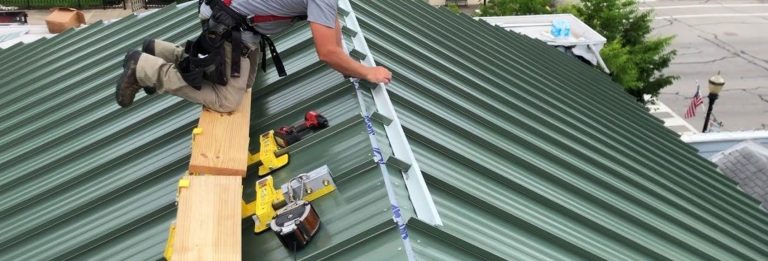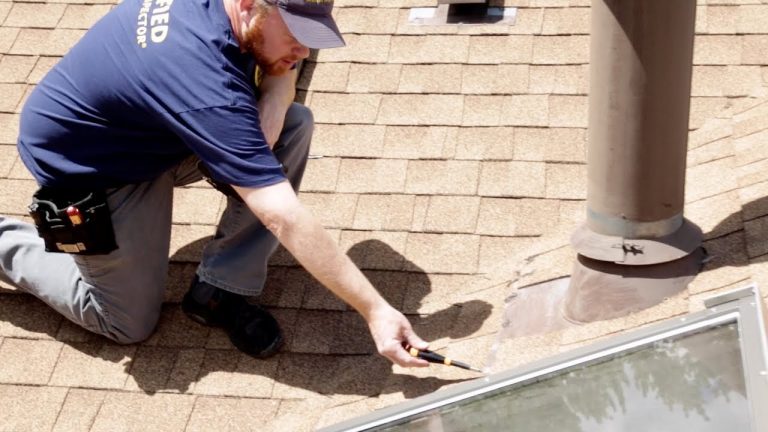
When it comes to roofing strategies, homeowners and business owners alike often prioritize aesthetics, cost-effectiveness, and durability. However, one type of roofing system that’s often overlooked—yet increasingly being chosen for its numerous advantages—is the flat roof. Though traditionally associated with modern and commercial buildings, flat roofs are making a strong case for residential use as well. So, why should your roofing strategy consider a flat roof? Let’s explore the various reasons why this design might be the best choice for your property.
1. Maximizing Usable Space
One of the most compelling reasons for choosing a flat roof is the opportunity it provides to maximize the usable space of your property. With a sloped roof, the upper levels of your building are often limited in their utility, with attic space largely relegated to storage. Flat roofs, on the other hand, can be transformed into usable outdoor space, such as a rooftop terrace, garden, or even a solar panel installation. In urban areas, where space is often at a premium, this added functionality can be invaluable. You can host gatherings, create a tranquil outdoor oasis, or simply enjoy panoramic views of your surroundings, all from the comfort of your own home.
Furthermore, the flat design offers flexibility for future development. If you ever plan to add additional floors or need to build a structure on top, a flat roof is a solid foundation for this type of expansion. This versatility is particularly advantageous for both residential and commercial buildings.
2. Cost-Effective and Efficient
Flat roofs are often more affordable than their pitched counterparts, both in terms of initial construction and long-term maintenance. The materials needed for flat roofs, such as TPO (thermoplastic polyolefin), EPDM (ethylene propylene diene monomer), or modified bitumen, are generally less expensive than the materials used for sloped roofs, such as shingles or tiles. Additionally, the labor costs tend to be lower because flat roofs are simpler to install.
The efficiency of a flat roof doesn’t stop at construction. These roofs are typically easier to maintain and repair. For example, if there’s a problem with the roofing membrane, it’s more straightforward to access and fix compared to a sloped roof. Moreover, flat roofs require less material for installation, reducing waste and contributing to a more sustainable approach to building. This can be particularly appealing for eco-conscious homeowners and businesses aiming to minimize their carbon footprint.
3. Superior Drainage and Weather Resistance
When properly designed and installed, flat roofs offer excellent drainage characteristics. A slight slope, typically around 1-2 degrees, allows for water to flow efficiently toward drainage systems, reducing the risk of pooling or water damage. Given the potential for heavy rainfalls, snow, and ice accumulation in certain climates, flat roofs can withstand these elements without experiencing the stress or potential damage that steeply pitched roofs often endure.
Additionally, flat roofs tend to be more durable in the face of high winds. The streamlined, low-profile design means that there’s less wind resistance compared to steeply sloped roofs, which can experience significant pressure during storms. As a result, flat roofs are less likely to suffer from wind damage, especially in hurricane-prone areas or regions with extreme weather patterns.
4. Energy Efficiency Benefits
Another significant advantage of flat roofs is their potential for enhancing the energy efficiency of your building. These roofs are perfect platforms for installing solar panels, as they provide ample, unobstructed space for a solar array. Solar energy is one of the most effective ways to reduce electricity bills, and flat roofs give homeowners and businesses an easy way to harness this renewable energy source. With a well-installed solar panel system, your property could reduce its dependence on the grid, leading to long-term savings and sustainability benefits.
In addition, flat roofs can be fitted with reflective coatings or green roofing systems, both of which contribute to better insulation and temperature regulation. Reflective coatings help to deflect sunlight and reduce the amount of heat absorbed by the roof, lowering cooling costs in hot climates. Green roofs, which incorporate vegetation into the design, provide natural insulation and can lower heating and cooling energy requirements year-round. These energy-efficient features make flat roofs a top choice for environmentally-conscious property owners.
5. Modern Aesthetic Appeal
Flat roofs are often associated with modern and minimalist architectural styles. They offer clean, crisp lines and a sleek profile that complements contemporary design trends. For those looking to create a minimalist or cutting-edge aesthetic for their home or business, a flat roof can be the finishing touch that elevates the building’s overall visual appeal. Unlike traditional sloped roofs, which can appear dated or bulky, flat roofs contribute to a streamlined, modern look.
Moreover, the simple, geometric structure of flat roofs makes them an excellent canvas for other design elements, such as large windows, cantilevered overhangs, or unusual facade treatments. Whether you’re designing a high-end modern residence or a commercial building, a flat roof can set your project apart and provide it with a distinctive visual identity.
6. Sustainability and Eco-Friendly Features
As sustainability becomes a top priority for many homeowners and business owners, flat roofs stand out as an eco-friendly option. With their potential for green roofing systems, flat roofs can contribute to biodiversity by providing a space for plants and supporting wildlife habitats. Green roofs are also beneficial for urban areas, as they can help reduce the urban heat island effect by absorbing and dissipating heat that would otherwise contribute to elevated temperatures in the surrounding environment.
Additionally, the materials used for flat roofing are often recyclable, and many modern systems are designed with longevity in mind, which reduces the frequency of replacements and the overall waste associated with roofing materials. By choosing a flat roof, you’re making a sustainable choice that can have a positive impact on the environment.
Conclusion
Incorporating a flat roof into your roofing strategy offers a wealth of advantages, from cost-effectiveness and energy efficiency to superior drainage and aesthetic appeal. Whether you’re interested in maximizing your usable space, creating a sustainable and modern design, or enhancing the functionality of your building, flat roofs present an excellent solution. As more homeowners and businesses recognize the versatility and benefits of flat roofs, it’s clear that this design choice is no longer just a trend—it’s a smart, practical, and forward-thinking approach to roofing.
By embracing the flat roof design, you can future-proof your property, increase its value, and enjoy the numerous benefits it provides for years to come. With the right materials, installation, and maintenance, a flat roof can be a reliable and stylish addition to your building.





